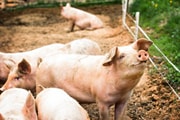Is your grocery haul shrinking? Discover the 'shrinkflation' phenomenon!
By
- Replies 13
These days, grocery shopping isn’t a particularly fun activity. Most people come home with less money and less enthusiasm than when they pulled out of the driveway.
Having said that, people nowadays are trying to work out if the products they purchased are really lighter or smaller than before, or if it's all in the mind.
Do you feel robbed after seeing what you've bought? The underlying cause of your discomfort has a name: 'shrinkflation'.
According to Leigh Merrington, Acting Head of Prices Statistics at the Australian Bureau of Statistics (ABS), shrinkflation describes a product's 'quantity (or volume) falling but the price remaining the same'.
In other words, you're paying the same amount for a product, but you're getting less of it.
It's not just bad news for wallets; it also undermines faith in big companies. Australians rely on these groups to keep prices fair, and when they try to sneakily grow their profit margins, it challenges the relationship between business and consumer.
So, which products are being ‘shrinkflated’, what are the effects, and how can we take action?
Shrinkflation is real
The ABS tracks shrinkflation as best as it can as it through point-of-sale scanning.
The data captured has detailed information on transactions and accounts for 16 per cent of all data in the Consumer Price Index (CPI).
The ABS said: ‘When the quantity or volume of an item falls but the price remains the same (i.e. when 'shrinkflation' occurs), the ABS treats this as a price rise when measuring the CPI.’
Despite some products just appearing to be smaller or lighter than before, other products aren’t as kind. Spend enough time prowling down the aisles of the supermarket, and you'll increasingly notice shrinkflation in things like snacks and confectionery, breakfast cereals, and even bathroom items like shampoo.
‘Shrinkflation has become more prevalent over the past couple of years, however we don't have statistics available to say by how much,’ Merrington said.
What can we do about shrinkflation?
Sadly, boycotting products with shrinkflation might not make much difference, considering that manufacturer decisions take a long time to trickle down and be felt at the supermarket level.
Thankfully, there’s the Australian Competition and Consumer Commission (ACCC), which is there to promote fair trading.
Under the law, businesses can’t make false, misleading or deceptive claims about their products. So, if you have serious doubts about the value of something you usually buy after noticing packaging size changes, get in touch with the ACCC.
‘Whether the labelling of any product is misleading under the Australian Consumer Law, it will depend on the overall impression conveyed to a reasonable consumer by the packaging as a whole,’ an ACCC spokesperson said.
‘Under the Competition and Consumer Act, most supermarkets and grocery stores are required to display unit pricing in-store, online and in advertising.’
Another way to help stop shrinkflation is to make use of the unit pricing information that's often displayed in supermarkets and online stores.
Unit pricing is a good way of tracking how much bang Aussies are getting for each buck spent.
‘Consumers can use the unit pricing to better compare prices between supermarket products and find the best value for money,’ the spokesperson said.

What do you think of this story? Let us know in the comments below!
Having said that, people nowadays are trying to work out if the products they purchased are really lighter or smaller than before, or if it's all in the mind.
Do you feel robbed after seeing what you've bought? The underlying cause of your discomfort has a name: 'shrinkflation'.
According to Leigh Merrington, Acting Head of Prices Statistics at the Australian Bureau of Statistics (ABS), shrinkflation describes a product's 'quantity (or volume) falling but the price remaining the same'.
In other words, you're paying the same amount for a product, but you're getting less of it.
It's not just bad news for wallets; it also undermines faith in big companies. Australians rely on these groups to keep prices fair, and when they try to sneakily grow their profit margins, it challenges the relationship between business and consumer.
So, which products are being ‘shrinkflated’, what are the effects, and how can we take action?
Shrinkflation is real
The ABS tracks shrinkflation as best as it can as it through point-of-sale scanning.
The data captured has detailed information on transactions and accounts for 16 per cent of all data in the Consumer Price Index (CPI).
The ABS said: ‘When the quantity or volume of an item falls but the price remains the same (i.e. when 'shrinkflation' occurs), the ABS treats this as a price rise when measuring the CPI.’
Despite some products just appearing to be smaller or lighter than before, other products aren’t as kind. Spend enough time prowling down the aisles of the supermarket, and you'll increasingly notice shrinkflation in things like snacks and confectionery, breakfast cereals, and even bathroom items like shampoo.
‘Shrinkflation has become more prevalent over the past couple of years, however we don't have statistics available to say by how much,’ Merrington said.
What can we do about shrinkflation?
Sadly, boycotting products with shrinkflation might not make much difference, considering that manufacturer decisions take a long time to trickle down and be felt at the supermarket level.
Thankfully, there’s the Australian Competition and Consumer Commission (ACCC), which is there to promote fair trading.
Under the law, businesses can’t make false, misleading or deceptive claims about their products. So, if you have serious doubts about the value of something you usually buy after noticing packaging size changes, get in touch with the ACCC.
‘Whether the labelling of any product is misleading under the Australian Consumer Law, it will depend on the overall impression conveyed to a reasonable consumer by the packaging as a whole,’ an ACCC spokesperson said.
‘Under the Competition and Consumer Act, most supermarkets and grocery stores are required to display unit pricing in-store, online and in advertising.’
Another way to help stop shrinkflation is to make use of the unit pricing information that's often displayed in supermarkets and online stores.
Unit pricing is a good way of tracking how much bang Aussies are getting for each buck spent.
‘Consumers can use the unit pricing to better compare prices between supermarket products and find the best value for money,’ the spokesperson said.
Key Takeaways
- 'Shrinkflation' is when the quantity of a product decreases while the price stays the same.
- The Australian Bureau of Statistics (ABS) acknowledges this trend and factors it into their inflation computations.
- According to Leigh Merrington of the ABS, shrinkflation is common in snack and household items, and has become more prevalent in recent years.
- While the Australian Competition and Consumer Commission (ACCC) states that businesses cannot make misleading claims about their products, it does not regulate prices, meaning it's primarily up to consumers to read labels and choose the best value products.
What do you think of this story? Let us know in the comments below!









